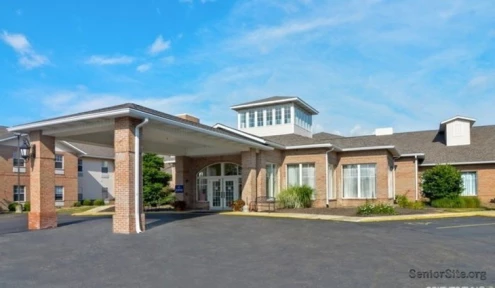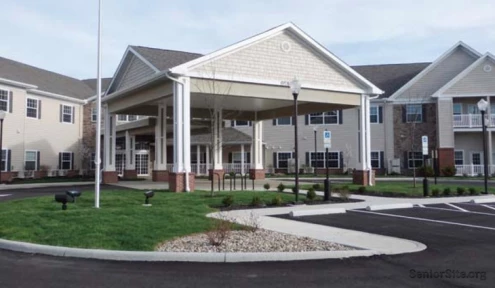Expert Tips for Making the Right Decision
Selecting the right nursing home for a loved one is a crucial decision that requires careful consideration and thorough research. This comprehensive guide will walk you through the essential steps and factors to consider, ensuring you make an informed choice that provides the best care and quality of life for your family member.
Understanding Your Needs
Before beginning your search, it’s crucial to assess the specific needs of your loved one. This will help you narrow down your options and focus on facilities that can provide the appropriate level of care.
Action Steps:
- Consult with healthcare providers: Discuss your loved one’s current health status and future care needs with their doctor.
- List required services: Create a detailed list of necessary medical services, therapies, and daily assistance requirements.
- Consider personal preferences: Note any cultural, religious, or lifestyle preferences that are important to your loved one.
Researching Potential Facilities
Once you understand your needs, it’s time to start researching potential nursing homes in your area.
Action Steps:
- Use online resources: Utilize the Medicare Nursing Home Compare tool (https://www.medicare.gov/care-compare/) to find and compare facilities in your area.
- Seek recommendations: Ask for referrals from healthcare providers, friends, and family members who have experience with local nursing homes.
- Check for certifications: Ensure potential facilities are certified by Medicare and Medicaid and hold necessary state licenses.
Evaluating Quality and Safety
The quality of care provided by a nursing home is paramount. Use the following steps to assess the quality and safety standards of potential facilities.
Action Steps:
- Review Five-Star Quality Ratings: Check the CMS Five-Star Quality Rating for each facility you’re considering. Pay attention to the following components:
- Overall rating
- Health inspection results
- Staffing levels
- Quality measures
- Analyze health inspection reports: Request and review the most recent state health inspection reports for each facility. Look for:
- Number and severity of deficiencies
- How quickly issues were addressed
- Any recurring problems
- Check for special focus designation: Verify if the facility is on the Special Focus Facility (SFF) list, which indicates a history of serious quality issues.
Assessing Staff and Care Levels
The quality of care in a nursing home is directly related to its staff. Use these steps to evaluate staffing levels and qualifications.
Action Steps:
- Review staff-to-resident ratios: Ask for current staff-to-resident ratios and compare them to the new CMS minimum staffing requirements:
- Total nurse staffing: 3.48 hours per resident per day
- Registered Nurse (RN): 0.55 hours per resident per day
- Nurse Aide: 2.45 hours per resident per day
- 24/7 RN on-site presence
- Inquire about staff turnover: High turnover rates can indicate potential issues with care quality or facility management.
- Check staff qualifications: Ask about staff training programs, specializations, and ongoing education opportunities.
Considering Specialized Care Options
If your loved one requires specialized care, such as memory care for dementia or Alzheimer’s, it’s crucial to evaluate facilities that offer these services.
Action Steps:
- Identify specialized programs: Look for facilities that offer specific care programs tailored to your loved one’s needs.
- Evaluate program components: For memory care, ensure the facility provides:
- Secure environments to prevent wandering
- Specialized activities for cognitive stimulation
- Staff trained in dementia care techniques
- Check success rates: Ask about the outcomes and success rates of their specialized programs.
Reviewing Costs and Financial Assistance
Understanding the costs associated with nursing home care and available financial assistance options is crucial for long-term planning.
Action Steps:
- Request detailed cost breakdowns: Ask for a comprehensive list of all charges, including:
- Base room and board fees
- Additional charges for specialized services
- Any potential future cost increases
- Explore payment options: Investigate various payment methods, including:
- Medicare coverage (typically limited to short-term stays)
- Medicaid eligibility and coverage
- Long-term care insurance
- Private pay options
- Consult with a financial advisor: Consider speaking with a financial advisor specializing in elder care to explore all available options and plan for long-term care costs.
Visiting Facilities
Once you’ve narrowed down your options, it’s time to visit the top contenders in person. This step is crucial for getting a feel for the environment and quality of care.
Action Steps:
- Schedule visits: Plan visits to your top choices, preferably at different times of day to get a comprehensive view of daily operations.
- Use a checklist: Prepare a detailed checklist to ensure you cover all important aspects during your visit. Key areas to observe include:
- Cleanliness and maintenance of the facility
- Interactions between staff and residents
- Engagement levels of residents
- Quality and variety of meals
- Available activities and social programs
- Talk to residents and families: If possible, speak with current residents and their families about their experiences with the facility.
- Ask questions: Prepare a list of questions to ask during your visit, such as:
- What is the facility’s philosophy on care?
- How are care plans developed and updated?
- What is the policy on family involvement in care decisions?
- How are complaints or concerns handled?
Making the Final Decision
After completing your research and visits, it’s time to make your final decision.
Action Steps:
- Compare notes: Review your observations and checklist results for each facility you visited.
- Discuss with family: Involve other family members in the decision-making process and consider your loved one’s preferences if possible.
- Review contracts carefully: Before making a final commitment, thoroughly review all admission agreements and contracts. Consider having a legal professional review the documents as well.
- Trust your instincts: While data and ratings are important, also consider how comfortable you and your loved one feel with each facility. The right fit involves both practical considerations and emotional comfort.
By following these comprehensive steps, you’ll be well-equipped to choose a nursing home that provides the best possible care for your loved one. Remember, this decision is about finding a place where your family member can receive quality care, maintain dignity, and enjoy a good quality of life.












